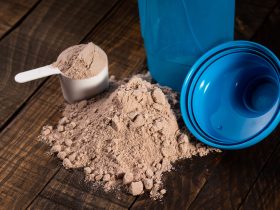POWERLIFTING: STRENGTH AND RECOVERY
If you’re into pressing, pulling, and otherwise dominating barbells and dumbbells on a daily basis, then you need to get serious about it. Far too often you hit the gym and blast through your normal menu of sets and reps with little to no real thought given as to how or why you’re doing what you’re doing.
Simply being purposeful is a positive first step in getting stronger and faster.
Beyond that, you have to become an active learner to build muscle by getting your arms (and brain) around as much useful information from reliable sources as possible. And, in the strength game, reliability can be measured in pounds.
Squat Deep
How low can you go? If you want to get freaky strong, it’s time to find out. “A deep squat is an effective squat, whether your goal is to build muscle or build strength,”. “Full-range, ass-to-the-grass squats recruit more fibres in your quads, glutes, and hamstrings. Although powerlifting federations vary in their ideas of a successful squat, a competition-quality squat generally means that your hips descend to or below the knees. Whether you want to compete or not, your time in the rack will be better spent doing quality repetitions, not partial reps with more weight than you can handle. Squat for results, not ego.”
Deadlift Like a Boss
“Perhaps no lift represents powerlifting better than the deadlift,”. “It is one of the most primal lifts imaginable. There’s something heavy on the ground in front of you, and you just have to pick it up.”. This is about pure strength and maximum muscle recruitment, after all. “A proper deadlift is a real total-body effort and there is nothing more satisfying than lifting cartoonish amounts of weight and lowering it under control. Make deads a core component of your workouts, start light, focus on your form, and enjoy the steady, satisfying gains in leg and back development, 1RM and grip strength, that come from proper, consistent deadlifting.”
3. Pyramid Up
When it comes to rep schemes, there are so many combinations advocated by the strength crowd. What’s best? 5×5? Heavy triples? Ten sets of three?
“The pyramid concept of increasing weight and decreasing reps from set to set within a particular exercise is not new, and yet surprisingly many beginners tend to go straight to a particular weight and lift until failure for set after set’. “Instead, try building toward a high point in the exercise—a weight that you hope to lift in the 2-4 rep range cleanly. The rep counts might look like this: 12, 10, 8, 6, 4, 2. The weight should gradually increase with each set as the reps go down. The amount of the increase per set should depend on the lift. Obviously, if you aim to finish the pyramid at a 500-lb deadlift, you will need to make bigger jumps in the weight from set to set to get there than you would to finish with a 315-lb bench press.”
And if you want to see where you belong on the strongman continuum. “Periodically, maybe every 4-6 weeks, tweak this strategy to test your 1RM. If you want to simulate a powerlifting meet, finish the pyramid with three single-rep attempts, each increasing toward your new personal best. Using the 500-lb deadlift max attempt as an example, your workout might look like this: 135lbs for 12, 225 for 9, 315 for 6, 405 for 3, 435 for 1, 465 for 1, 500 for 1.” Looks easy enough, right?
Drop Sets
You may think that drop sets are for bodybuilders only—a push-past-failure technique designed to carve new detail into muscle. But your body can use this proven approach to build new strength and size, as well.
“In conjunction with the pyramid example above, I like to push myself a bit further on the last set of the Big 3 exercises (squat, bench, and deadlift). “Again, using the 500-lb deadlift example above, immediately follow that final rep with drop sets all the way back down to 135, but this time increase your reps as you decrease the weight. So, it might look like this: 500 for a single, 405 for 2-4, 315 for 6-8, 225 for 10-12, and finally 135 for 12. Keep the pace up with these drop sets, taking no more rest than the time it takes you to strip the weights. Focus on your form as you decrease the weight. As your back and legs burn, this will become more and more challenging in spite of the decreasing weight, but it will be worth it.”
Compete
“Powerlifting is all about challenging yourself mentally and physically—pushing your limits safely. The most rewarding meets I’ve participated in were those when I set a new personal best in one of the lifts, not necessarily just the meets I’ve won (although that’s nice, too).
Form Check
Don’t buy into the misconception that powerlifters are grunting beasts only concerned with moving the weight from A to B. They are strong because they are meticulous technicians.
“Focus on form!” “The common theme here is obviously that proper form comes first. If you’re lifting properly, the strength will follow. Take the ego out of your lifts, take some weight off the bar and take pride in doing the lifts properly.”
Rest and Eat
It’s bro science to think that you can throw down slice after slice of pizza just because you’re having such massive weight about. Wrong. Way, way wrong.
“You need to rest and eat appropriately, An intense weightlifting program requires the proper amount of fuel and rest for results. Without getting into diet program specifics, the basic principle is that your diet should be appropriate for your personal goals—whether they are to build size and strength or lose weight.”






